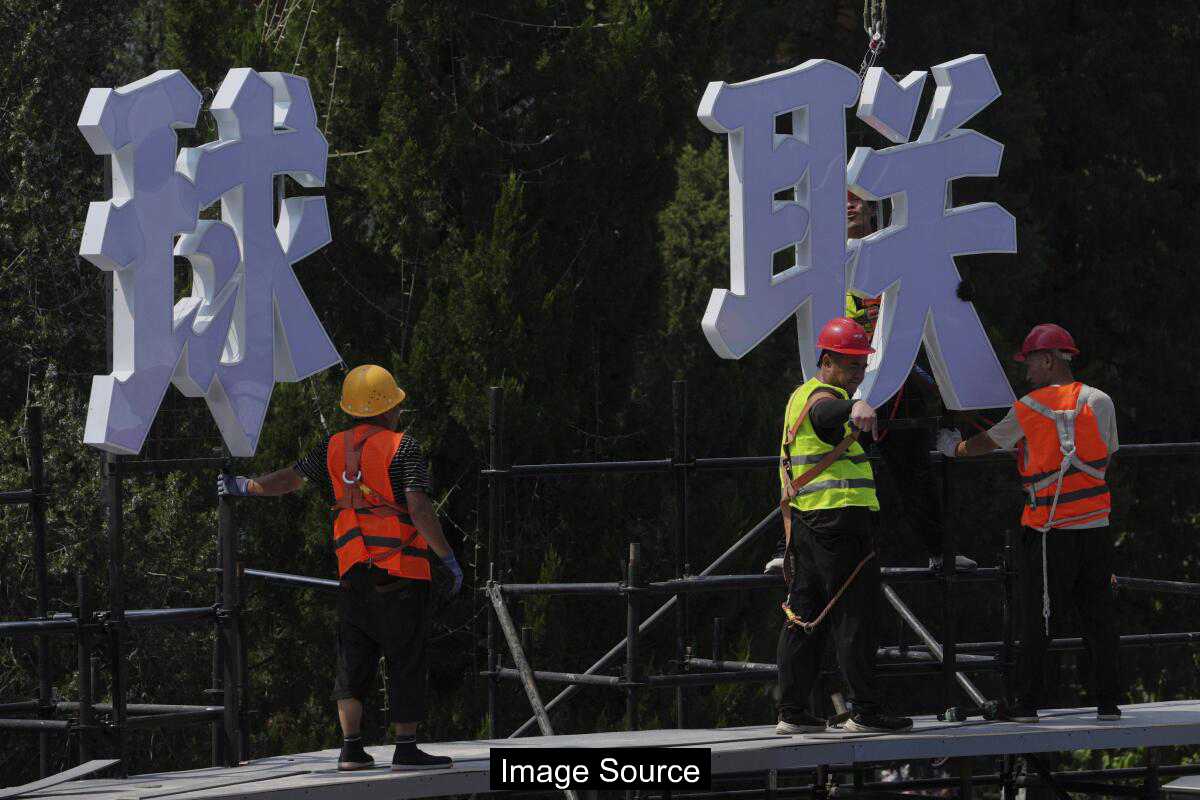China’s economic recovery continued to face headwinds in July, with key indicators suggesting persistent challenges in manufacturing and consumer spending. Recent data from the National Bureau of Statistics revealed declines in industrial output and retail sales, underscoring the ongoing pressures from a weakened property sector and global trade uncertainties.

China’s Economic Landscape in July 2025
China’s economic indicators revealed a complex picture of slowing growth and persistent challenges in July 2025. The National Bureau of Statistics reported decelerating industrial output, with annual growth dropping to 5.7%, marking an eight-month low. Manufacturing sectors demonstrated cautious behavior, reflecting uncertainty in global trade dynamics and domestic economic conditions.
Export performance remained a notable bright spot, with a 7.2% year-on-year surge indicating resilience amid challenging circumstances. Chinese manufacturers strategically redirected shipments to Southeast Asia, Africa, and other regions to mitigate potential losses in the U.S. market. The trade landscape continued to be influenced by ongoing negotiations and temporary tariff pauses.
Seasonal challenges compounded economic pressures, with torrential rains disrupting business activities across multiple regions. Despite these external complications, government reports emphasized the economy’s underlying resilience and capacity to adapt to volatile international environments.
Property Market Downturn
The Chinese property sector experienced significant contraction, with investments plummeting 12% in the first seven months of the year. Residential housing investment declined nearly 11%, reflecting a prolonged market downturn that began during the COVID-19 pandemic. Newly built housing prices in major cities fell 1.1%, signaling continued market instability.
Economists predict potential price stabilization around 2028, though the current market remains challenging. The housing crisis has triggered widespread economic repercussions, including developer defaults and substantial job losses. Government interventions have focused on ensuring contracted housing projects are completed.
The property market’s weakness directly impacts consumer spending, as most Chinese families have significant wealth tied to real estate. Reduced property values and investment confidence have contributed to more conservative household financial strategies.
Consumer and Labor Market Dynamics
Retail sales growth decelerated to 3.7% in July, the slowest rate in seven months, down from 4.8% in June. Consumer spending remained constrained by broader economic uncertainties and the ongoing property market challenges. Wholesale prices declined 3.6% year-on-year, indicating weak demand across multiple sectors.
The labor market showed signs of strain, with unemployment rising to 5.2% as university graduates entered the job market. Consumer price inflation remained modest at 0.4% month-over-month, reflecting limited economic momentum. These indicators suggest a complex economic environment with multiple interconnected challenges.
Businesses and consumers alike are adopting cautious strategies, waiting for clearer signals of economic direction. The interplay between trade negotiations, domestic policy, and global economic trends continues to shape China’s economic landscape.
Trade and International Relations
U.S.-China trade relations remained a critical factor in China’s economic performance. President Trump’s temporary tariff pause provided a brief window of reduced tensions, allowing businesses to adjust and explore alternative market strategies. Imports grew at the fastest pace in a year, suggesting strategic repositioning.
Manufacturers responded to uncertain trade conditions by diversifying export destinations and moderating investment, hiring, and production plans. The ongoing negotiations and potential policy shifts create an environment of cautious anticipation among economic actors.
International economic observers continue to monitor China’s ability to navigate these complex trade dynamics and maintain economic growth momentum.
Market Insights and Expert Perspectives
Economic analysts from institutions like Oxford Economics and ING provided nuanced interpretations of July’s economic data. They highlighted the multifaceted nature of China’s economic challenges, emphasizing the need for comprehensive policy responses.
Key observations included the tapering of export-driven growth, the persistent property market downturn, and the potential for structural economic adjustments. Experts suggested that government interventions and strategic policy measures would be crucial in addressing these challenges.
The interconnected nature of industrial output, consumer spending, property investments, and international trade underscores the complexity of China’s economic ecosystem.
Strategic Pointers
China’s economic performance in July 2025 revealed a landscape of cautious adaptation and strategic recalibration. The interplay between domestic challenges and international trade dynamics continues to shape economic strategies.
Businesses, investors, and policymakers must remain agile and responsive to rapidly evolving economic conditions. Diversification, innovation, and strategic planning will be key to navigating the current economic environment.
While challenges persist, the underlying resilience of China’s economic system offers potential for future growth and adaptation.
※ This article summarizes publicly available reporting and is provided for general information only. It is not legal, medical, or investment advice. Please consult a qualified professional for decisions.
Source: latimes.com